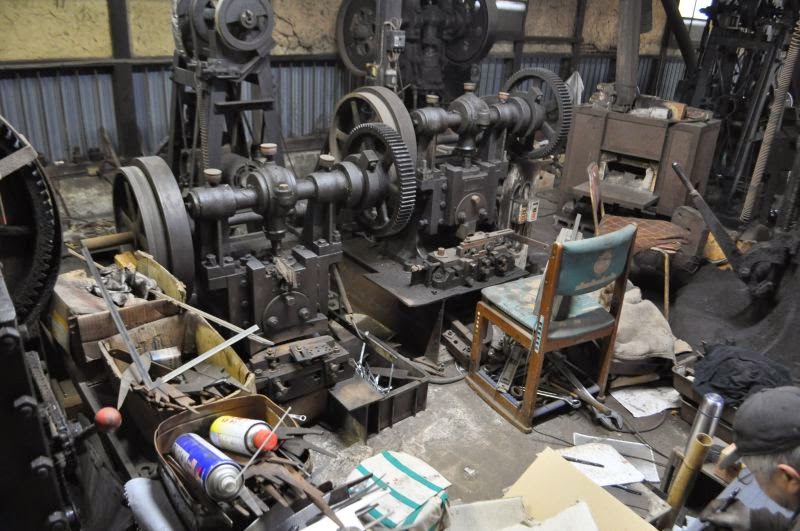If Jules Verne and Steven Spielberg both put their heads together they couldn't have conceived a scene like the following picture. What would you make with machinery like this - submarines for the Australian Navy? Perhaps this is the office of Hanna Barbara where the Jetsons was produced just after finishing off the Flintstone series!!
While you're trying to work it out let's take a look at another part of the same factory.
Now, this has to be the office because there's an office chair and it's surrounded by paper. And although I am a part of the 21st century's paperless office elite my office does look like this only there's no paper.
I'm looking around and I'm starting to think this place is older that I first thought because the walls are made with stcks and finished off with clay and I know they don't make factories like that these days - do they?
Could this be modern Japan, the country that emerged from the second world war in tatters and in 15 years would be described as the "Economic Miracle"? That's right - congratulations. The same place where in the capital city, street vending machines can do a face scan to determine your age and sex and make a suggestion as to what you would like to drink at that time of the day!! Yep, you're right again.
Not far from the office in a back room, Charles Dickens has just ducked around to the Blue Boar Inn to get a coffee leaving the office boy to repair the stapler (got to keep all that paperwork together until they too join the paperless office craze that's sweepiing through the 21st century).
But look at what the office boy emerges with from the back room with - what happened to the stapler!!
But wait, that's not the office stapler, but it is one of the best knives I've ever seen. Yes, it's a Damascus steel bladed beauty with a gorgeuos timber handle to finish it off. So that's what they make with all that amazing machinery - well done. If only I could turn my stapler into a work af art and slice up the roast with it as well.









































